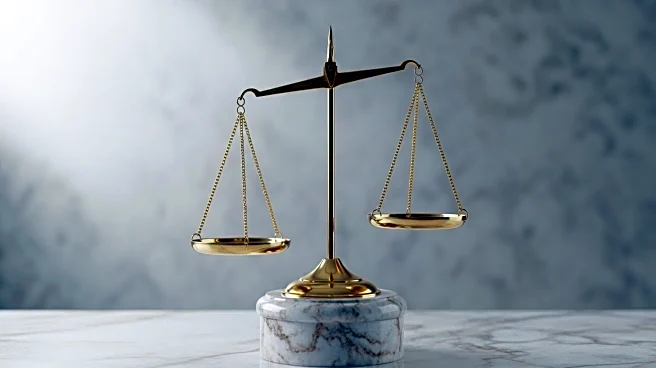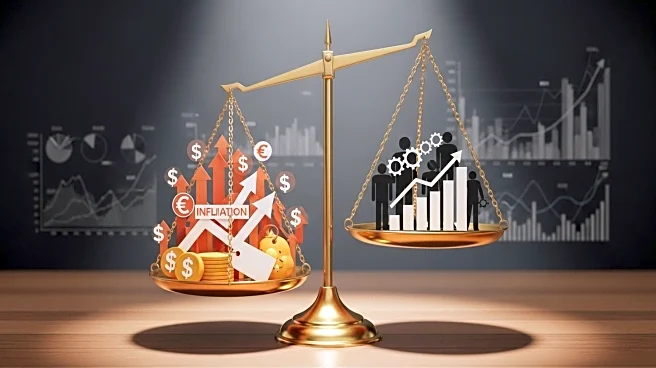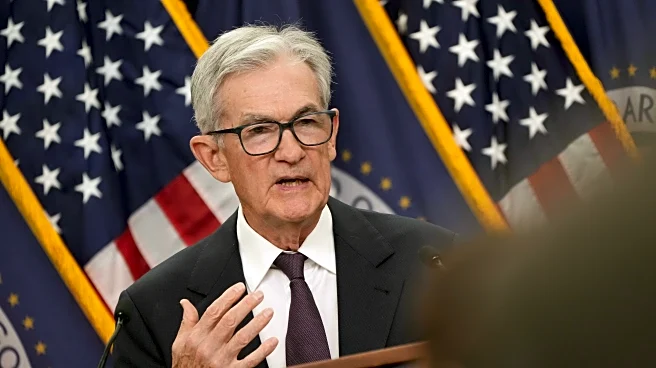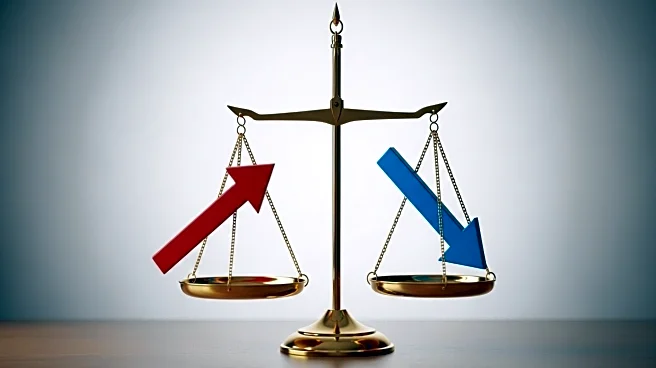What's Happening?
Federal Reserve Chair Jerome Powell announced a reduction in the central bank's key interest rate, citing weaknesses in the labor market as a primary concern. This decision follows the Federal Open Market Committee's first rate cut of the year, which was influenced by a decline in both the supply and demand for workers. Powell emphasized the need to balance the Fed's dual mandate of maintaining stable prices and maximizing employment, especially as tariffs have contributed to rising inflation. During a speech in Providence, Rhode Island, Powell described the current economic conditions as challenging, with risks to inflation and employment presenting a complex scenario for policymakers.
Why It's Important?
The decision to cut interest rates is significant as it reflects the Federal Reserve's response to economic indicators suggesting a slowdown in labor market activity. This move aims to stimulate hiring and economic growth, while also addressing inflation concerns. The rate cut could impact various sectors, including housing and consumer spending, by making borrowing cheaper. However, it also highlights the delicate balance the Fed must maintain between fostering economic growth and controlling inflation. Stakeholders such as businesses and investors are closely monitoring these developments, as they could influence market dynamics and future monetary policy decisions.
What's Next?
Looking ahead, Powell indicated that the Federal Reserve remains open to further rate cuts if economic conditions warrant additional accommodative measures. The central bank's policy stance is described as modestly restrictive, positioning it to respond to potential economic developments. Market participants are likely to watch for signals from the Fed regarding future rate adjustments, as well as any shifts in economic indicators that could prompt further action. The ongoing assessment of labor market conditions and inflation trends will be crucial in shaping the Fed's policy trajectory.
Beyond the Headlines
The current economic situation, characterized by slowing growth and rising inflation, bears similarities to stagflation scenarios of the past, though less severe. This presents a unique challenge for the Federal Reserve, as it navigates the complexities of achieving its dual mandate. The broader implications of these policy decisions may include shifts in consumer confidence and spending patterns, as well as potential impacts on global economic relations, particularly in light of tariff-related inflation pressures.











